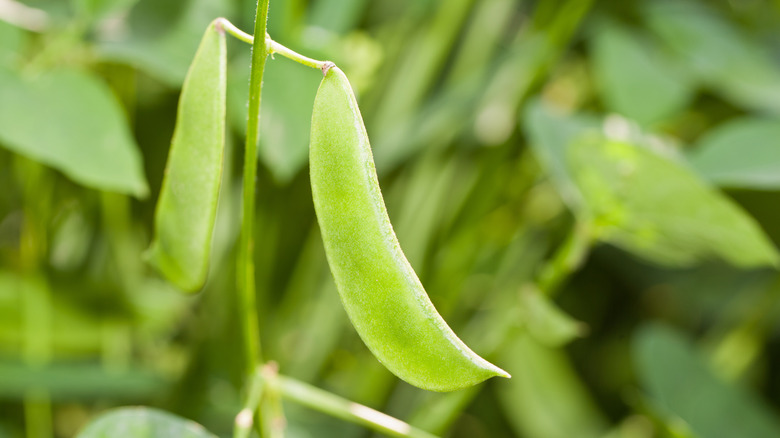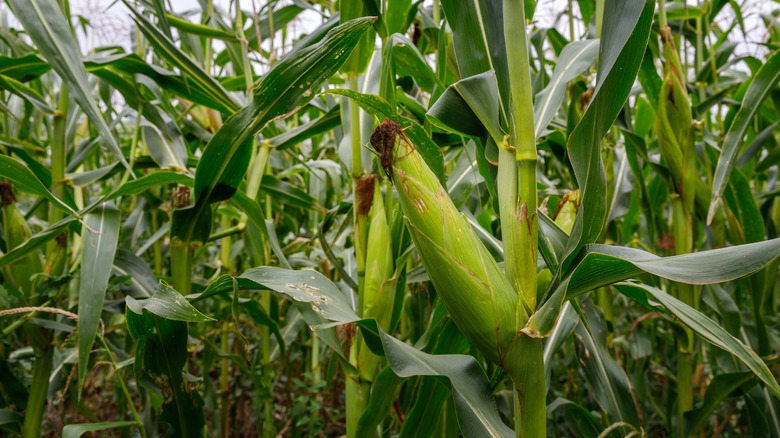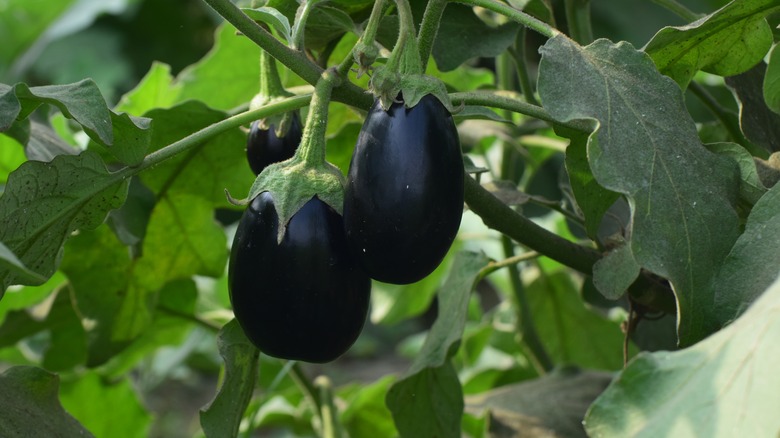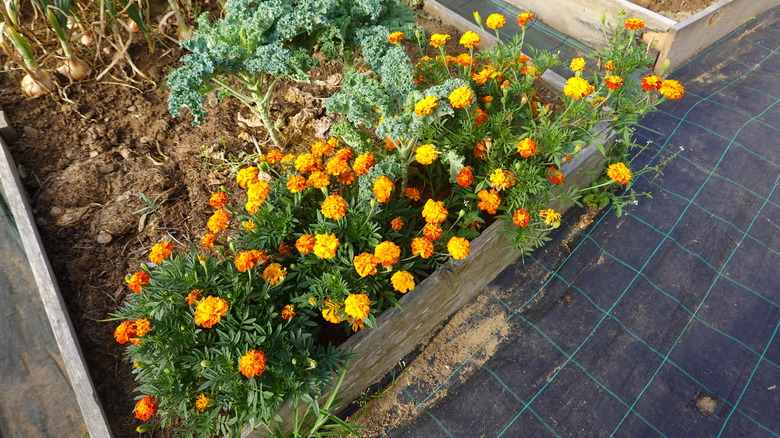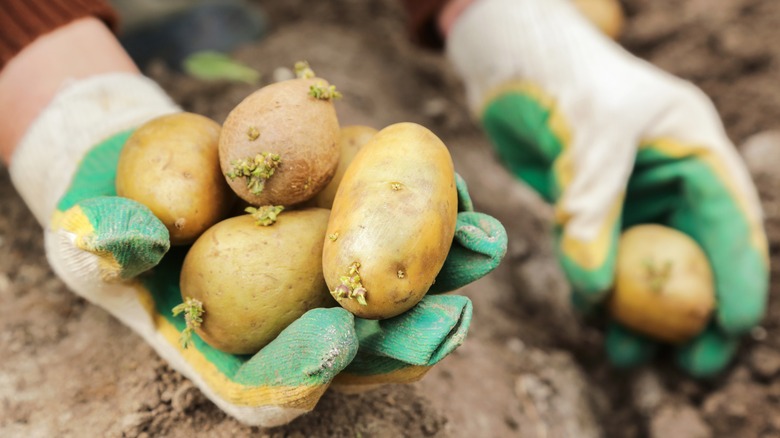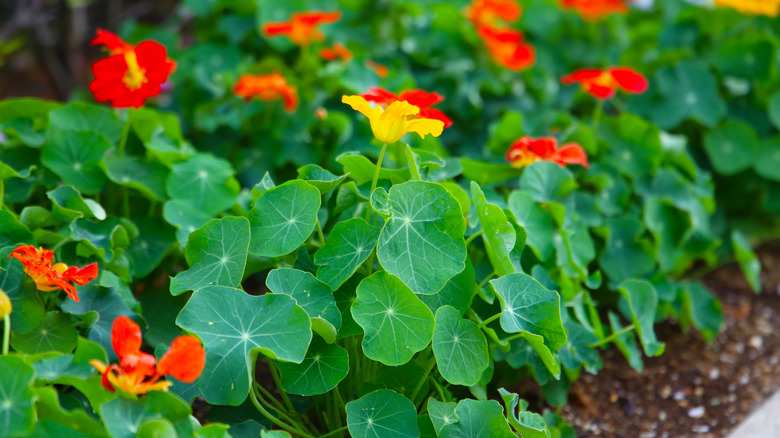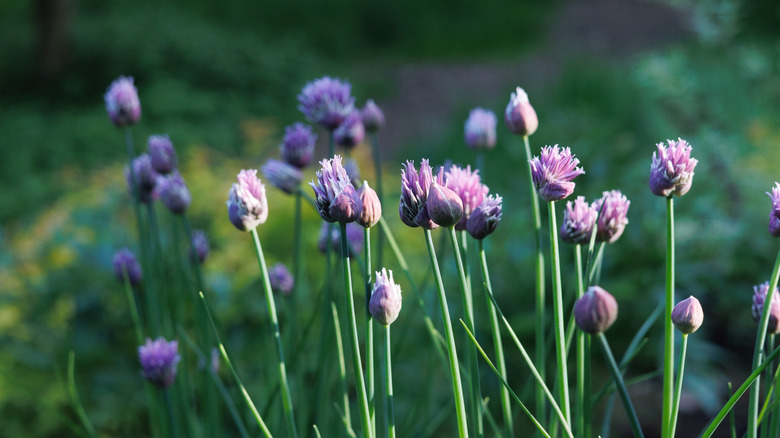10 Best Plants To Grow Next To Lima Beans (And 3 To Avoid)
Lima beans (Phaseolus limensis or Phaseolus lunatus) have a reputation as one of those green vegetables kids hate to eat, but the truth is, they're pretty awesome. Lima beans are considered a superfood, rich in fiber and protein, that provide a range of health benefits. They are commonly used to make hearty meals such as soups, casseroles, and side dishes. For lovers of this vegetable, the good news is that
growing lima beans is easy with the right gardening tips
. One tip that you won't want to gloss over is companion planting. Lima beans thrive in the garden when paired with the correct crops, like root vegetables, vine plants, and more.
Lima beans have many potential companion plants that can help repel pests, boost soil nutrients, and provide additional support for growth. For example, flowers like marigolds and nasturtiums do a great job of repelling certain pests from the area. Vine crops like peas and cucumbers provide support and improve soil conditions. Other plants like eggplant, corn, and squash provide even more benefits. But it's not all good news. Some plants, like peppers, onions, and sunflowers, should not be planted anywhere near lima beans because they can actually lead to slower, unhealthy growth. It's good to have a list of companion plants (and ones to avoid) on hand when you're planning your lima bean crop, so you get the healthiest plants possible.
Corn
Corn (Zea mays L.) has a long history of being planted as a companion for beans of all sorts, including lima beans. The practice, called "
," dates back to the 1300s or earlier, and involves planting corn, beans, and squash together. By planting corn with your lima beans, the plants will grow symbiotically, reducing weeds, deterring pests, providing support, and enriching the soil. Corn is the first crop of the three to be put in the ground. You should wait to add the lima beans until the corn is at least 6 inches tall.
Radishes
Radishes (Raphanus sativus) are a great companion for lima beans because they keep weeds and pests away. The lima beans provide natural shade, improving the growing conditions for the radishes. In addition, lima beans are considered a nitrogen-fixing plant, which enriches the soil as it grows. Radishes, on the other hand, are nitrogen cleaners that soak up any excess nitrogen in the soil to prevent it from seeping into the groundwater. Overall, the growing conditions of each plant complement one another, providing benefits for the whole garden.
Cucumbers
When planting cucumbers (Cucumis sativus L.), you want to pair them with plants that will not compete for nutrients but will attract pollinators and deter pests. Lima beans are a great candidate that complements the cucumber plant while providing benefits in return. Cucumbers thrive on the soil left behind from the nitrogen-fixing properties of lima bean plants. While lima beans don't necessarily deter pests or provide any other benefits to cucumbers, some of the other companion plants, like corn and radishes, do. For example, corn is a natural trellis for cucumbers, and radishes deter cucumber beetles.
Eggplants
Eggplants (Solanum melongena L.) are a good companion plant for lima beans for several reasons. Like many other lima bean companions, eggplant soaks up the nitrogen in the soil. Certain types of beans, including lima beans, can also provide benefits by deterring pests that can harm eggplants. For example, eggplants can be damaged by the Colorado potato beetle, which is a pest that is naturally repelled by beans.
Marigolds
Marigolds (Tagetes) are a well-known vegetable companion because they are particularly effective at repelling certain garden pests, including deer, rabbits, worms, whiteflies, squash bugs, and the Mexican bean beetle, which can cause serious damage to lima bean crops. It is recommended to plant the marigolds in between the rows of beans to get the best pest control results. Not all marigolds will deter all pests, though. Certain types of marigolds may be more effective against specific pests than others. So, you'll want to do your research before planting.
Squash
The third staple in the "Three Sisters' Planting" method, squash (Cucurbita), is a key companion plant for legumes like lima beans. Just like corn, squash can help reduce weeds and pests while providing benefits to the soil and adding support. The leaves of the squash act as living mulch while the vines provide strength and support for the lima beans. The leaves are also a relatively rough texture that most rodents and other garden pests don't like to step on, so they provide some protection for the lima beans from larger foragers.
Potatoes
Potatoes (Solanum tuberosum) are another great companion for lima beans. Not only do potatoes benefit from the nitrogen-fixing properties of lima beans, but the plants have the potential to repel each other's pests. While there is no research to support that potatoes repel bean pests, some gardeners say that they keep the Mexican bean beetle away. In turn, the lima beans keep the Colorado potato beetle at bay. You will want to be careful when planning because they don't play well with certain other lima bean companions, such as cucumbers or squash.
Beets
Beets (Beta vulgaris) have the potential to grow particularly well near lima beans, but you will need to be careful about what varieties you pair together. Lima beans can grow as bush or pole varieties. While beets are a fantastic companion plant for bush beans, they do not do well near pole beans. Bush beans provide beets with the perfect amount of nitrogen to make them sweet. Pole beans, on the other hand, leave beets with too much nitrogen, which promotes leafy growth that can overpower the plant.
Peas
Sometimes what beans need to grow better are other types of beans. For lima beans, that other bean is peas (Pisum sativum). Peas grow well with other beans because they have similar care requirements. They also enrich the soil with nitrogen, making them valuable rotation crops that can be planted alongside lima beans. Overall, lima beans and peas don't provide any particularly notable benefits toward one another, but they do provide powerful benefits to your garden when grown together.
Nasturtiums
Similar to marigolds, nasturtiums (Tropaeolum majus, T. minus) are flowers that are great companion plants for a vegetable garden. They provide significant benefits to the entire garden by attracting certain wildlife and repelling pests. Not only do nasturtiums attract pollinators like hummingbirds, bees, and butterflies, but you can also deter pests naturally with this fast-growing garden classic. They don't actually repel pests; instead, they act as a trap crop, especially for aphids, keeping them away from the vegetables.
Avoid alliums
You don't want to make the mistake of growing any type of alliums, which are in the onion family, near your lima beans. Alliums like onions, chives, garlic, and leeks do not mix well with beans. They cause issues with root development and can ultimately lead to stunted growth. In addition, onions are particularly susceptible to certain pests that may also harm lima beans, such as thrips. Companion planting increases the risk of pest damage from insects that are attracted to both crops.
Avoid peppers
In some cases, planting crops that have similar needs near each other can be beneficial, especially when it saves you extra work in the garden. However, sometimes plants that have similar needs will end up competing for nutrients, leaving both crops depleted and stunted. That is what happens when you plant lima beans too close to your pepper plants. Plus, peppers can increase the chance of disease in lima beans, particularly from lima bean pod blight.
Avoid sunflowers
Sunflowers (Helianthus annuus) are the pollinator magnets you should avoid placing in your garden near your lima beans. Sunflowers are allelopathic, meaning they release chemicals into the soil to protect themselves from weeds, pests, and disease. These chemicals are toxic to some plants and can lead to slower growth. Lima beans are among the crops that can not withstand the allelopathic effects of sunflowers.
